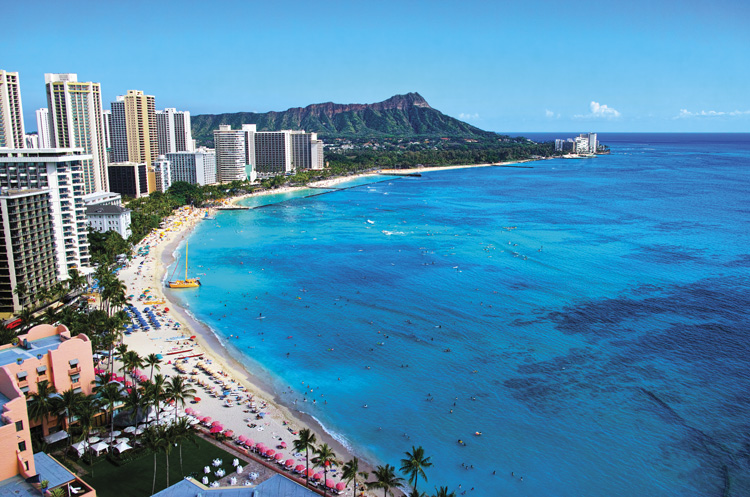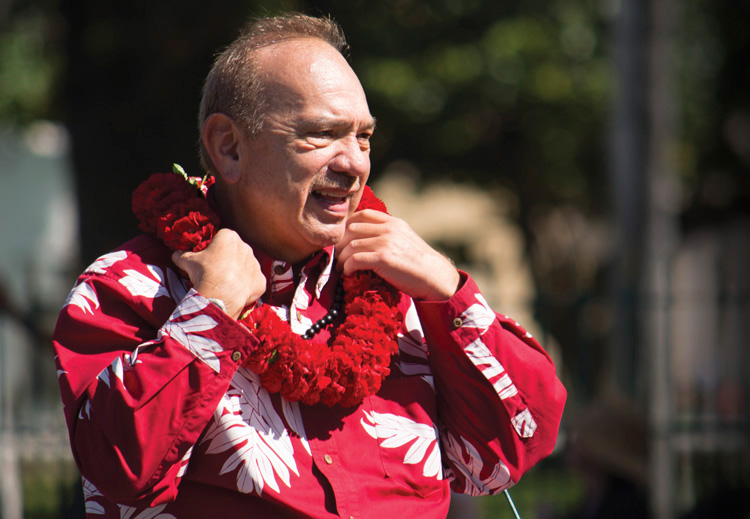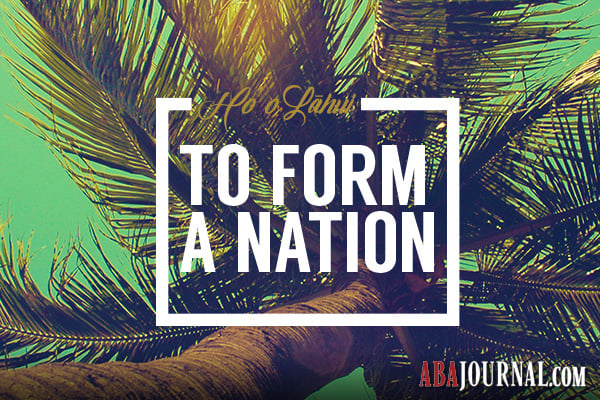Native Hawaiians wage an ongoing battle to organize into a sovereign nation

Photo of Honolulu, Hawaii by Shutterstock
Indigenous Enough
Rice highlighted a quirk of Native Hawaiians’ legal status: They’re an indigenous people of the United States, but federal Indian law doesn’t apply to them. Hawaii was admitted to the Union well after most Indian law was written, and no one has sought to include Native Hawaiians after the fact. That’s fine with some Native Hawaiians, who dislike being lumped in with mainland tribes. But if Hawaiians had a tribal-style government, Rice might have come out differently. The Supreme Court has held that Indian status is a political affiliation with a tribe rather than a racial category.
However, Native Hawaiians are still legally a bit different from other Americans, says Melody Kapilialoha MacKenzie, a professor at the William S. Richardson School of Law at the University of Hawaii at Mānoa who directs its Ka Huli Ao Center for Excellence in Native Hawaiian Law. Congress has passed more than 150 laws addressing Native Hawaiians in some way, she says—some of which include them with American Indians and Alaska Natives.
Among those laws are several creating benefits programs. Funded by land held in trust by the state government, they provide inexpensive homesteads, small-business loans, college scholarships and more. That’s needed in some segments of the community; Native Hawaiian poverty runs higher than average for the state. And Rice may threaten it all.
“In my perception, Rice v. Cayetano kind of sent the whole movement into a tailspin,” says Davis Price, a nonpracticing attorney who works for the Office of Hawaiian Affairs and participated in the ‘aha. “The fear was all the programs established up to that point that were set up to benefit Native Hawaiians were going to get taken out as a result of that ruling.”
Indeed, many of those programs were challenged in court after Rice. These challenges have largely failed for lack of standing, MacKenzie says—but nobody expects them to stop.

Photo of Melody Kapilialoha MacKenzie courtesy of the University of Hawaii at Manoa William S. Richardson School of Law
For some Native Hawaiians, the answer is federal recognition as a separate quasi-sovereign government. This would not require them to form a mainland-style tribe but give the Native Hawaiian government the same kind of sovereign-within-a-sovereign relationship to the federal government. The ABA supported this with Resolution 108B in 2006, which envisioned it as a way of protecting Native Hawaiian benefits. A rule finalized last fall by the federal Department of the Interior created a pathway for recognition of a Native Hawaiian government, if one should be formed.
Former Gov. John Waihe‘e says federal recognition is a tool for reaching three important ends: protecting Native Hawaiian institutions, allowing Native Hawaiians to manage their own resources, and permitting them to decide their own future as a people.
For example, he says, why should the state of Hawaii manage the Hawaiian Homes Commission? “They haven’t done a good job,” Waihe‘e says. “Perhaps Hawaiians can do a better job.”
But the Native Hawaiian community’s opinion on federal recognition is deeply divided. Some prefer full sovereignty, even if it means secession from the United States—which some consider an illegal occupier of Hawaiian land. A Native Hawaiian government might be able to draw on trust lands set aside for Native Hawaiians, as well as the private financial trusts that benefit the Hawaiian people. But that’s assuming the federal government would be willing to let Native Hawaiians go.
Noelani Goodyear-Ka‘ōpua, a political science professor at the University of Hawaii at Mānoa, would prefer a process that includes complete independence as an option. More importantly, she says, she’s concerned that the push for federal recognition is mostly coming from political elites and the state itself, rather than from the Native Hawaiian community.
“There was stunningly little real, genuine education about what this process would look like, what it should do or any sort of debate on the ground,” she says. “When people don’t know what’s going on, they’re not going to just jump on the bandwagon.”
Because of this controversy, the organization that threw the ‘aha, the Na‘i Aupuni, expressly did not advocate any particular form for a proposed Native Hawaiian government. However, backers of full independence argued that the the group was associated with too many members of the political establishment who do support federal recognition. (That includes Waihe‘e, whom the ABA Journal reached via an organization related to the Na‘i Aupuni.)
Price, who is less concerned with the form of government than the needs of Native Hawaiians, says the pro-independence side worries that federal recognition advocates will do anything to protect Native Hawaiian programs—even give up the right to seek independence. That’s led to a lot of mudslinging, he says. “I feel like my role, and really my generation’s role, is to sift through all the mud and try to figure out a path forward,” Price says. “And that’s why I participated in the ‘aha.”

John Waihe’e: “Perhaps Hawaiians can do a better job.”
This article appeared in the November 2017 issue of the




